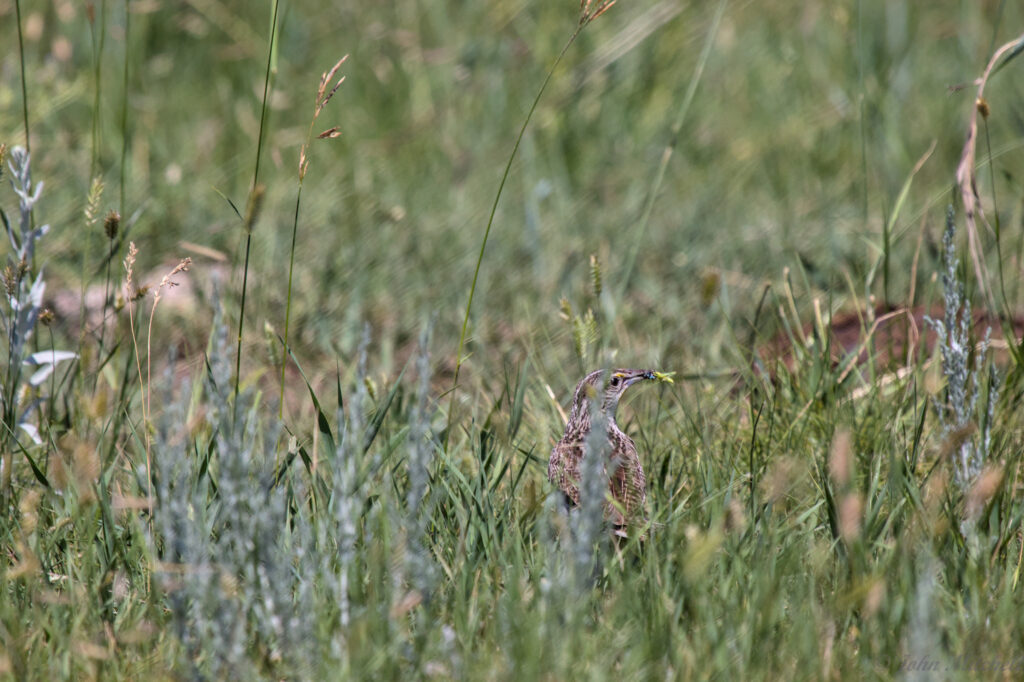Custer State Park, SD, July 2025
On the first day, Kate talked to a park ranger at the Custer State Park visitor center for what seemed like hours. (In reality, it was probably five minutes.) She learned that there should be Green Woodpeckers in the snags at the Fisherman Flats. Translating that to English, there should be Lewis Woodpeckers living around the burned out dead trees left by forest fires at the end of Fisherman Flats Road. Fisherman Flats Road is a dirt road that wanders into the middle of the wildlife loop. At least, it is a good dirt road.
We had seen the Lewis Woodpecker at Jewel Cavern National Monument, but we drove out there in the early afternoon for a few hours to see if we could see more of them. We stopped along the wildlife loop at various pull-offs to look for animals. At a pull-off where we were looking for Meadow Larks, Kate said “What is that with the green eyes?” John, intelligently replied with, “What is the what with green eyes?” After several rounds of saying the same thing and pointing, “This” turned out to be a Robber Fly. Specifically, a Promachus Vertebratus. This is another subspecies of the Robber Fly/Bee Panther/Assassin Fly that we originally saw in Illinois. Click here for a reminder. This one also caught a bee or wasp while we were watching.
You would not want to run into a Pterodactyl sized one of these in a dark alley.
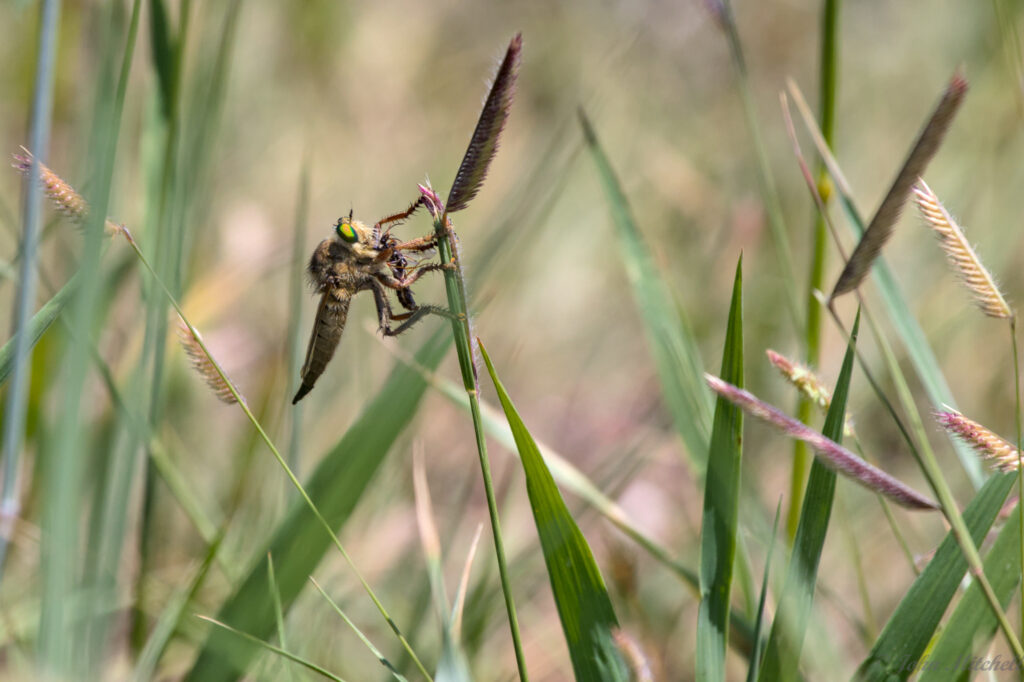
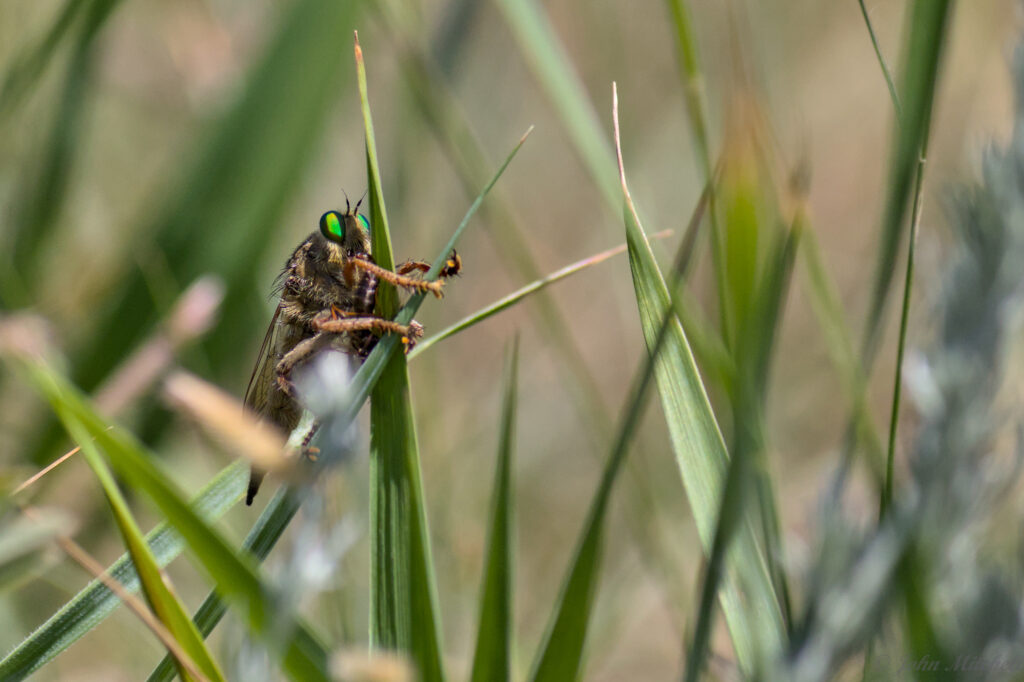
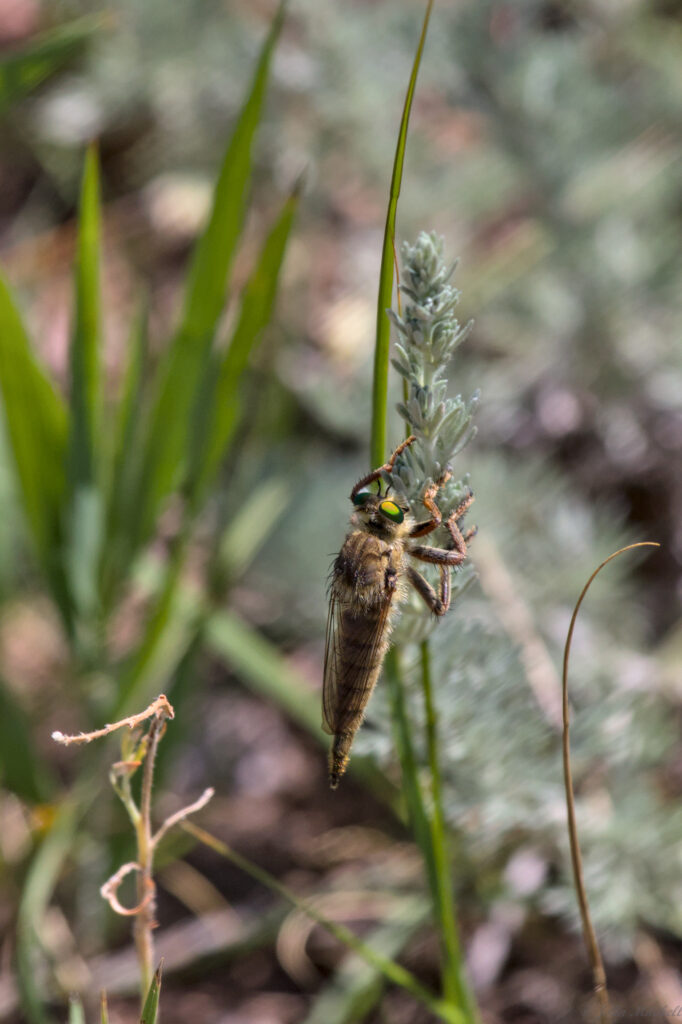
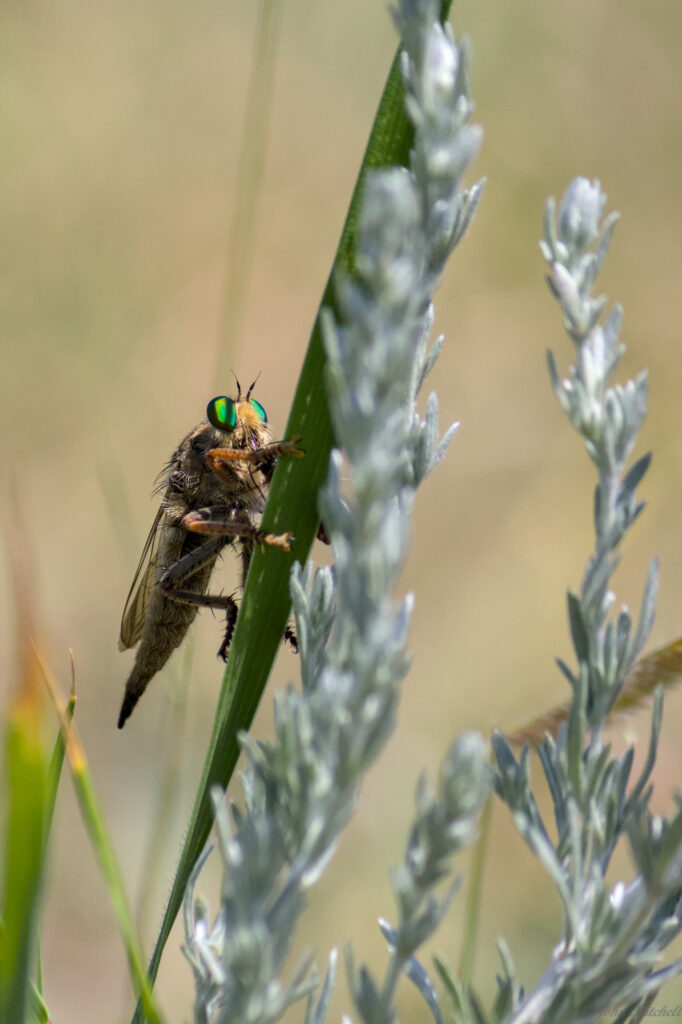
We did not see much else, until we got to Fisherman Flats Road. About half a mile up the dirt road, we saw two adult and two juvenile Prong-horned Antelope. To avoid stopping traffic, Kate slowed the car so John could dive and roll to safety. (It could have happened that way; you have no way of knowing.) John took a few pictures of the Antelope, but the adults kept pointing their butts towards him. A few minutes into the photography session, the babies noticed that their parent was bounding off over the hill. With much panic and haste, the juveniles followed suit.
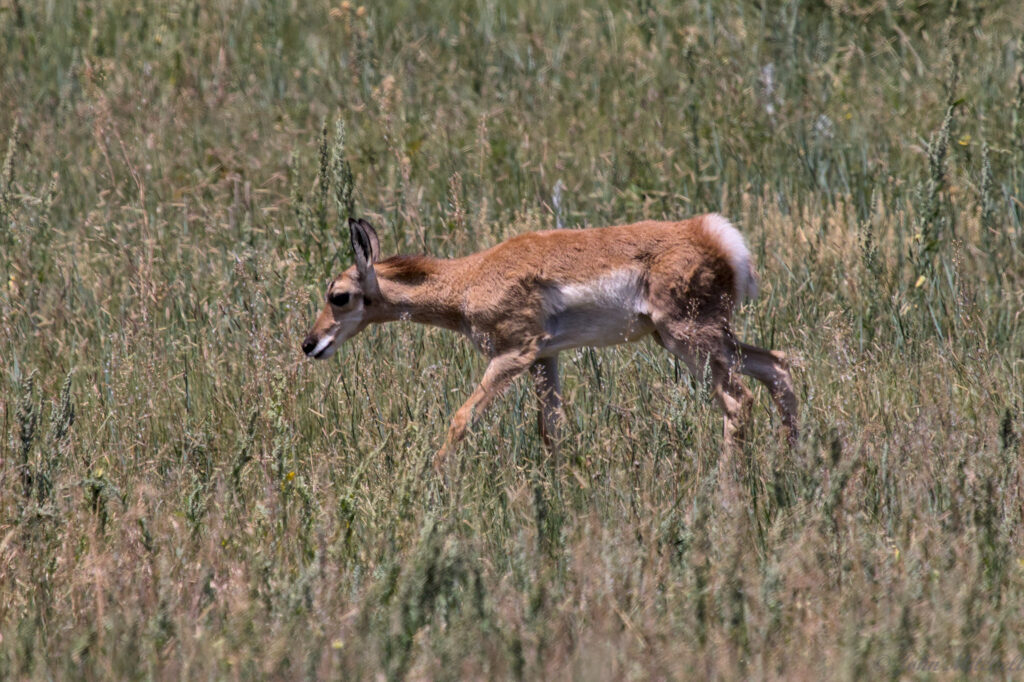
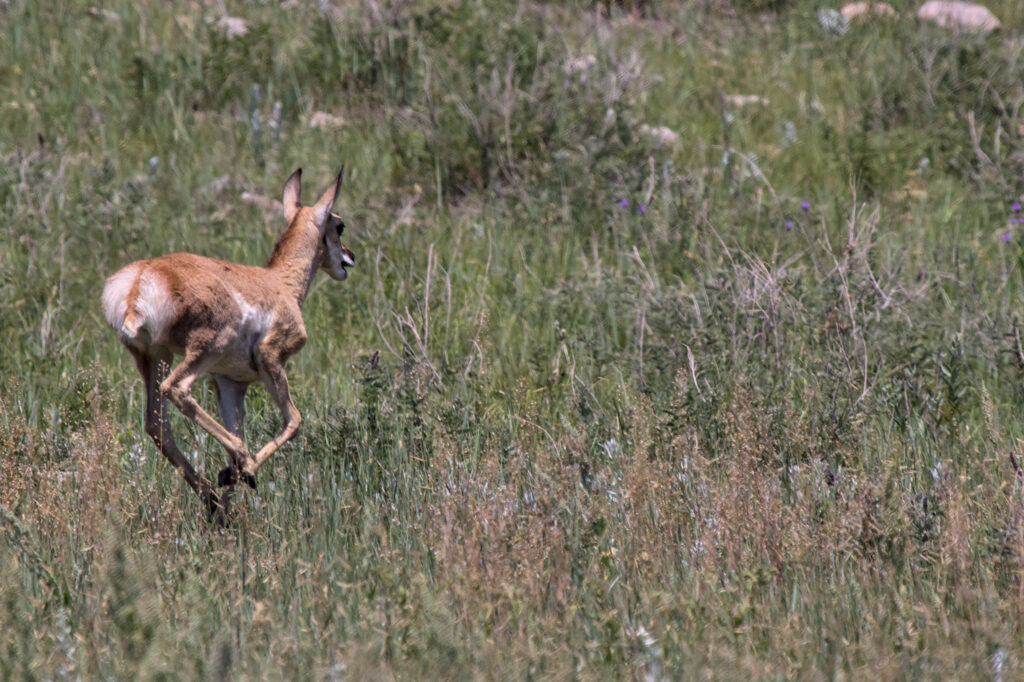
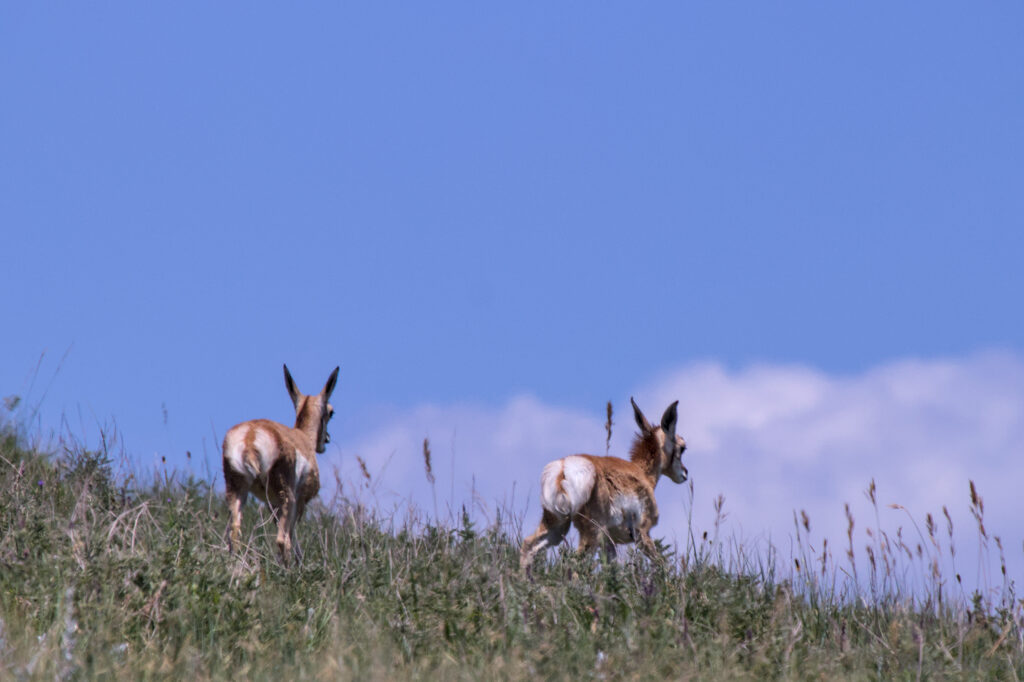
Towards the end of Fisherman Flats Road, there was a Prairie Dog town on either side of the road. Apparently, they are more like Prairie Squirrels or maybe Prairie Ground Squirrels. early French explorers called them “Petit Chien” (i.e., “little dog”) based on their warning barks. Their name comes from their habitat and warning vocalizations, not due to being related to dogs. These Prairie Dogs were a lot less skittish than the ones in Colorado. They were still careful to stay near their holes, bark warnings, and give us the Prairie Dog stink-eye.

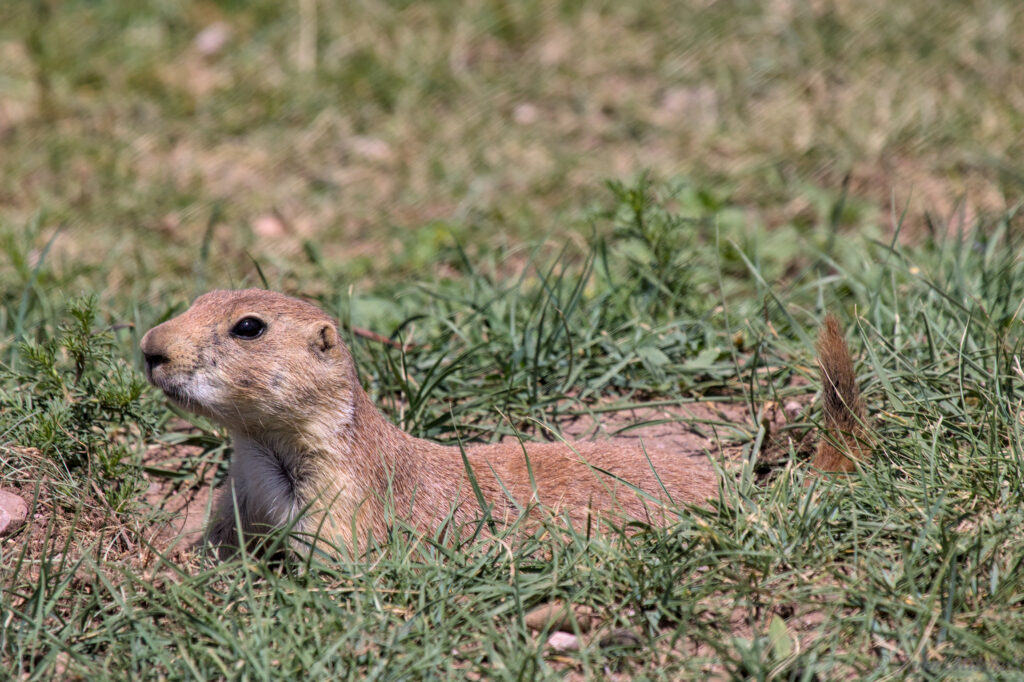
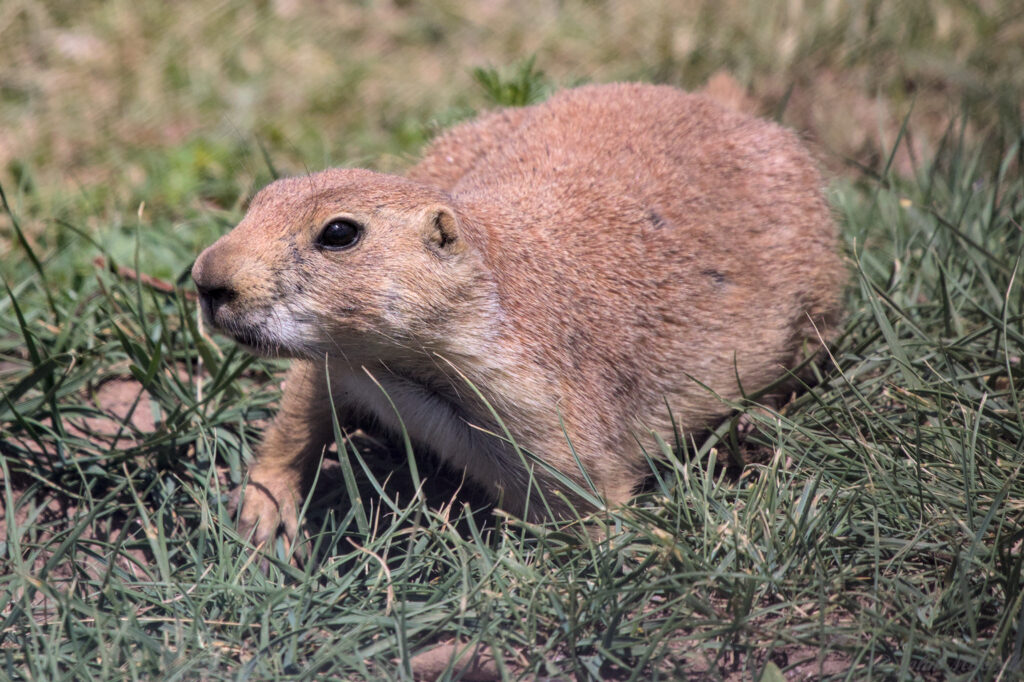
At the end of Fisherman Flats Road, there is a circle with room to park or turn around. We saw a few Red-headed Woodpeckers and Lewis Woodpeckers, but there were either too far away or just passing through. Kate pulled out the spotting scope to watch several of them on tree about 200 yards away. Eventually, a Tiger Swallowtail butterfly landed on Showy Milkweed near us, and John wandered off to take pictures. It looks like it might be a Western Tiger Swallowtail, but it also looks like it might have taken a glancing hit by a car. It could also be a Two-tailed Tiger Swallowtail that lost its tails.
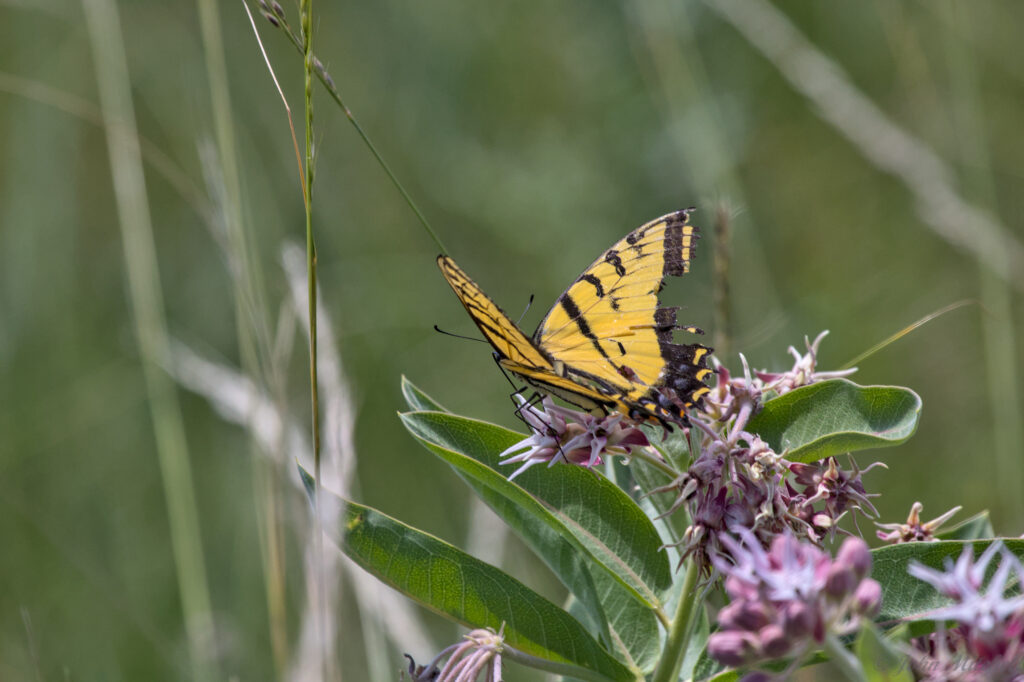
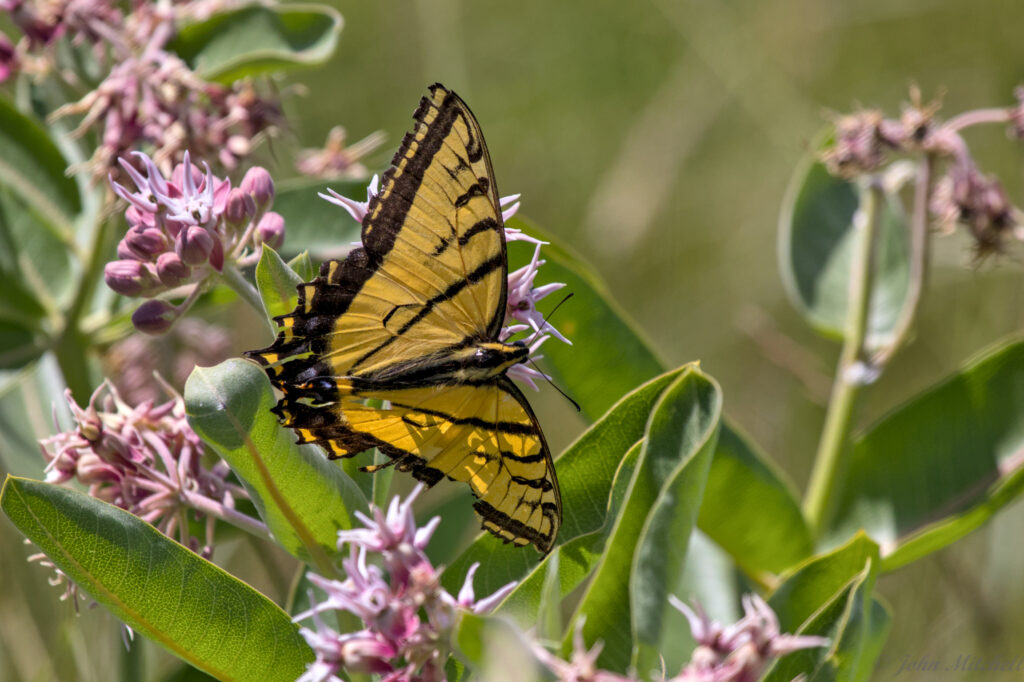

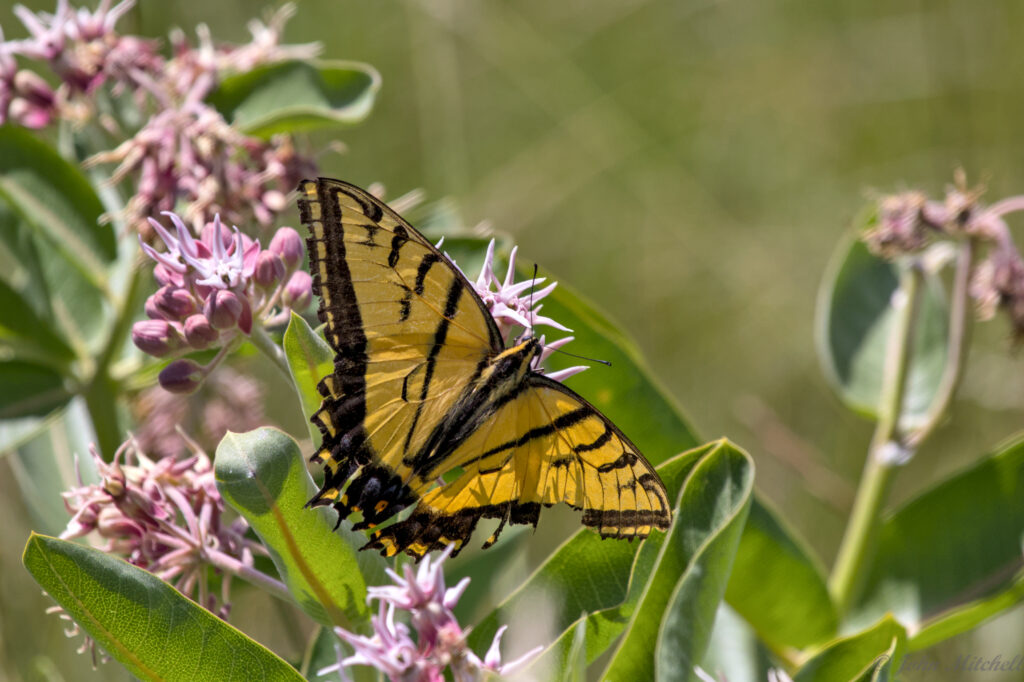
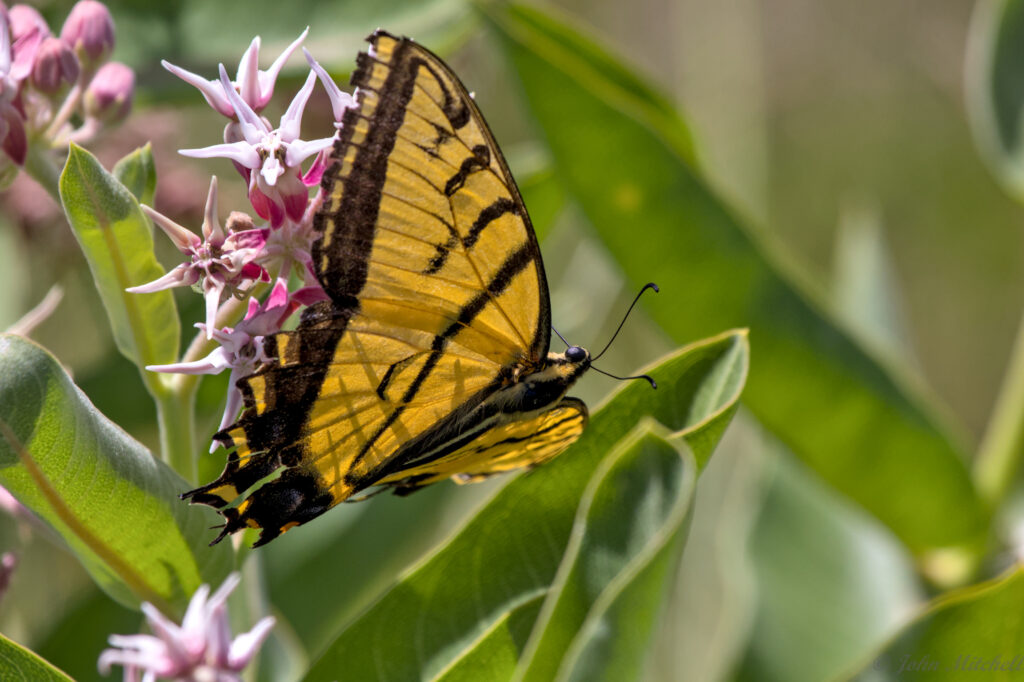
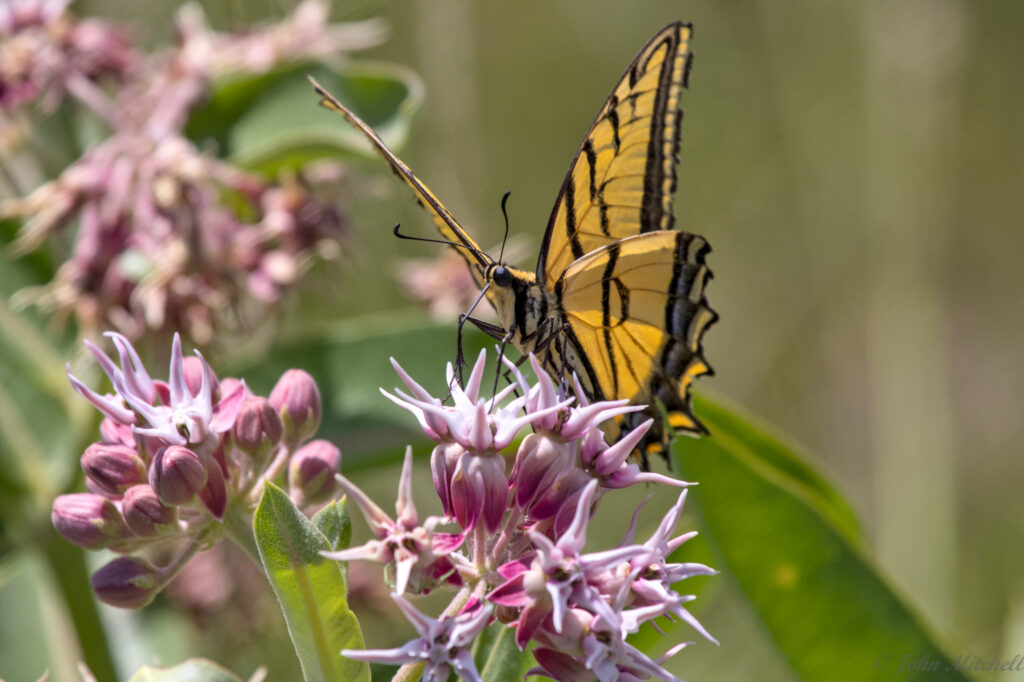
Kate walked up the trail a little bit, and it looks like it goes into the valley. Unfortunately, it connects to French Creek Nature Area Trail, which is full of poison ivy and creek fords. We gave up after about an hour at Fisherman Flats. On the way back home, we stopped at the Wildlife Visitor Center. This visitor center has some informational displays, some stuffed and mounted animals, and information on where to find wildlife at the park. Kate posted about the visitor center a few days ago, here.
When we were almost home, John saw a bird fly by and nagged Kate to stop. He managed to get a picture, but it was another half-ass picture of a Meadow Lark. Eventually, we will get a decent picture of a Meadow Lark.
